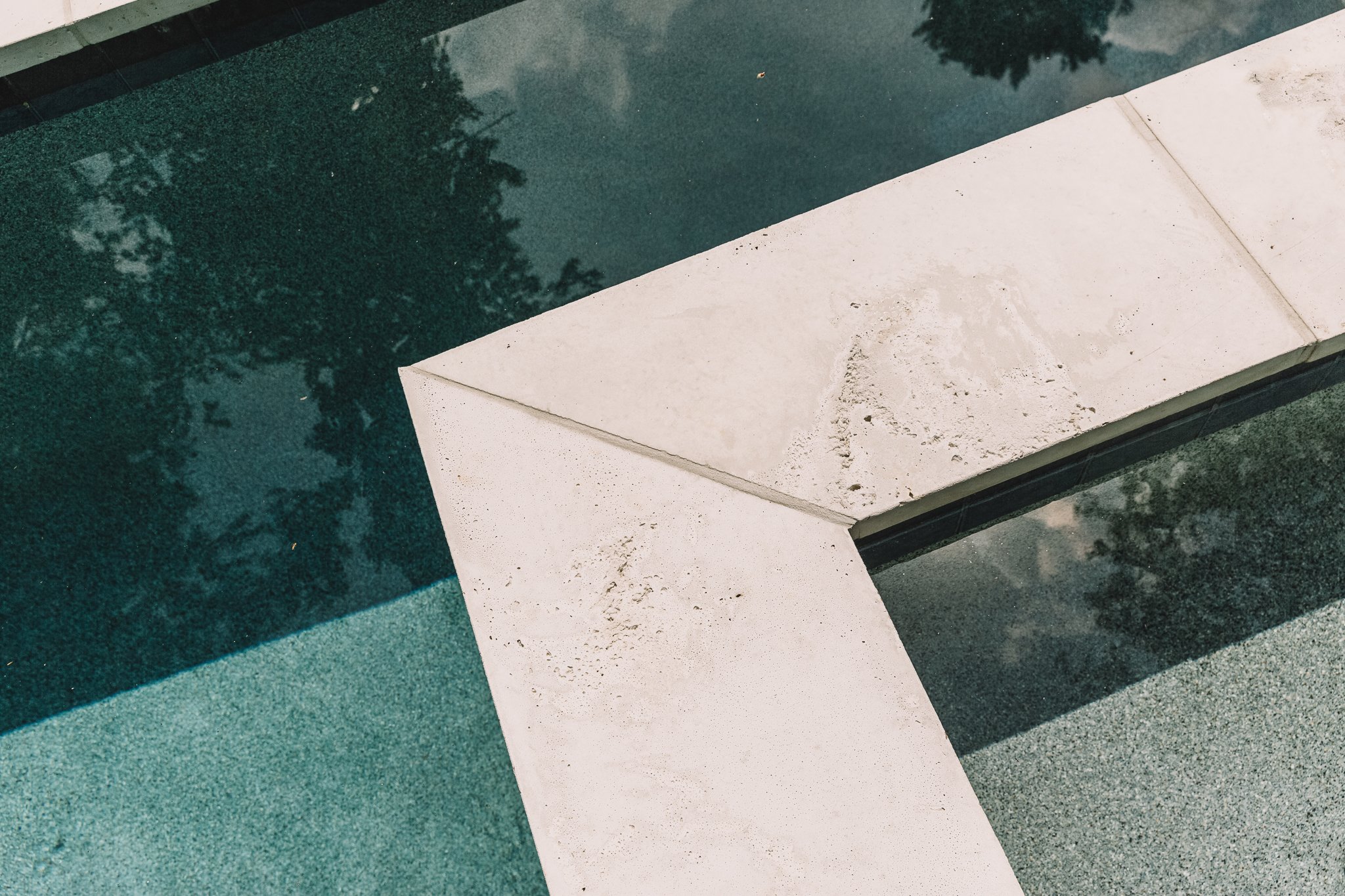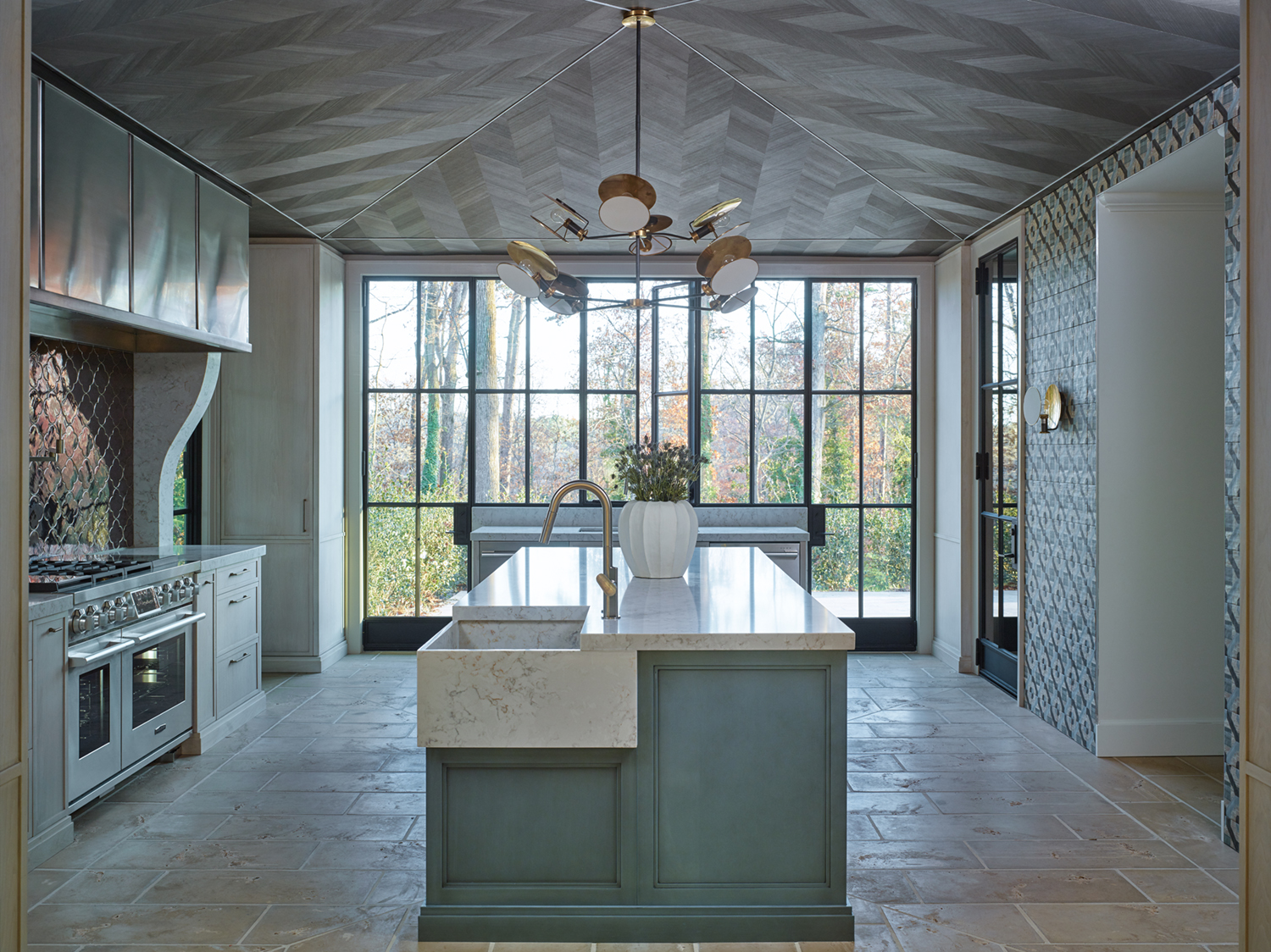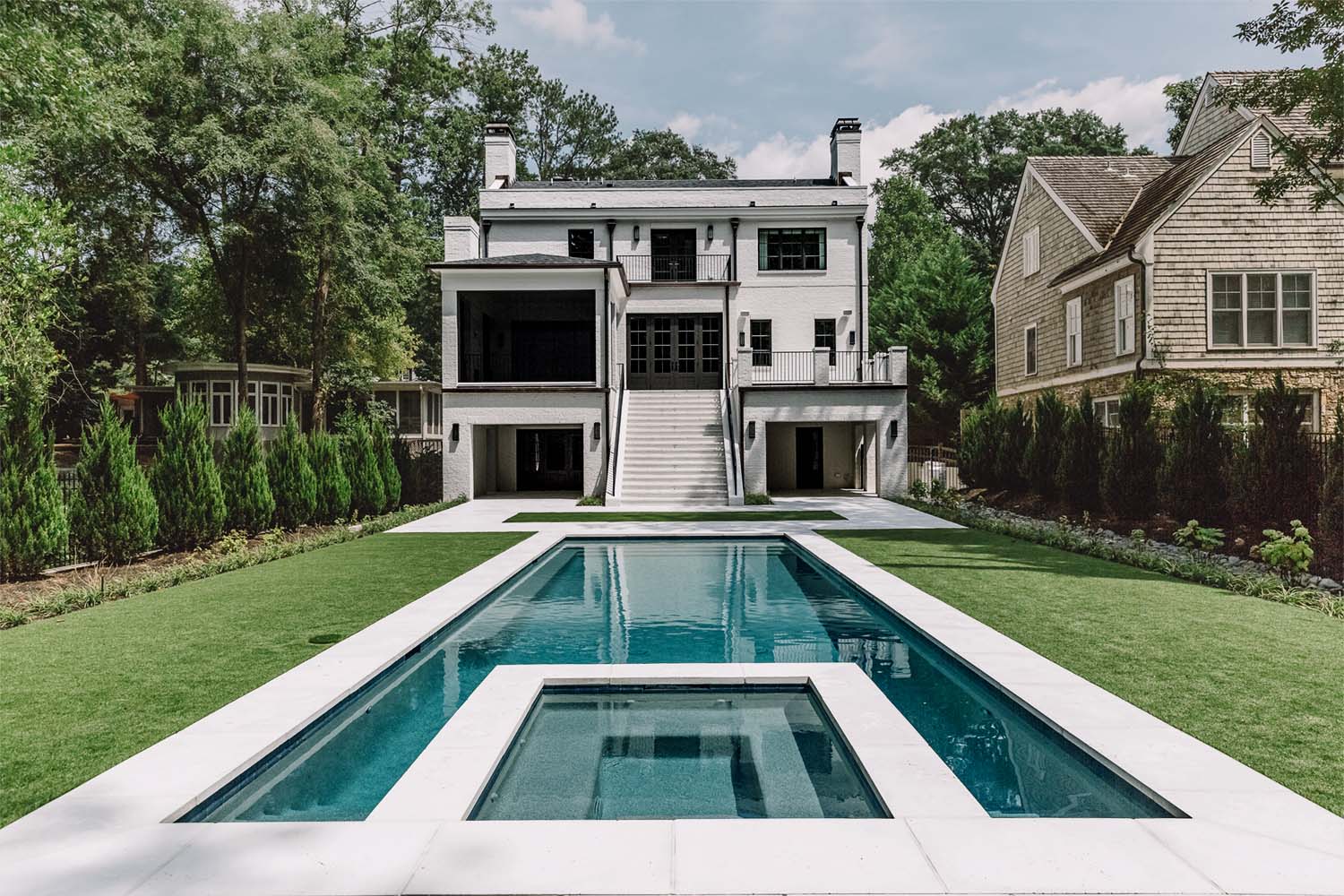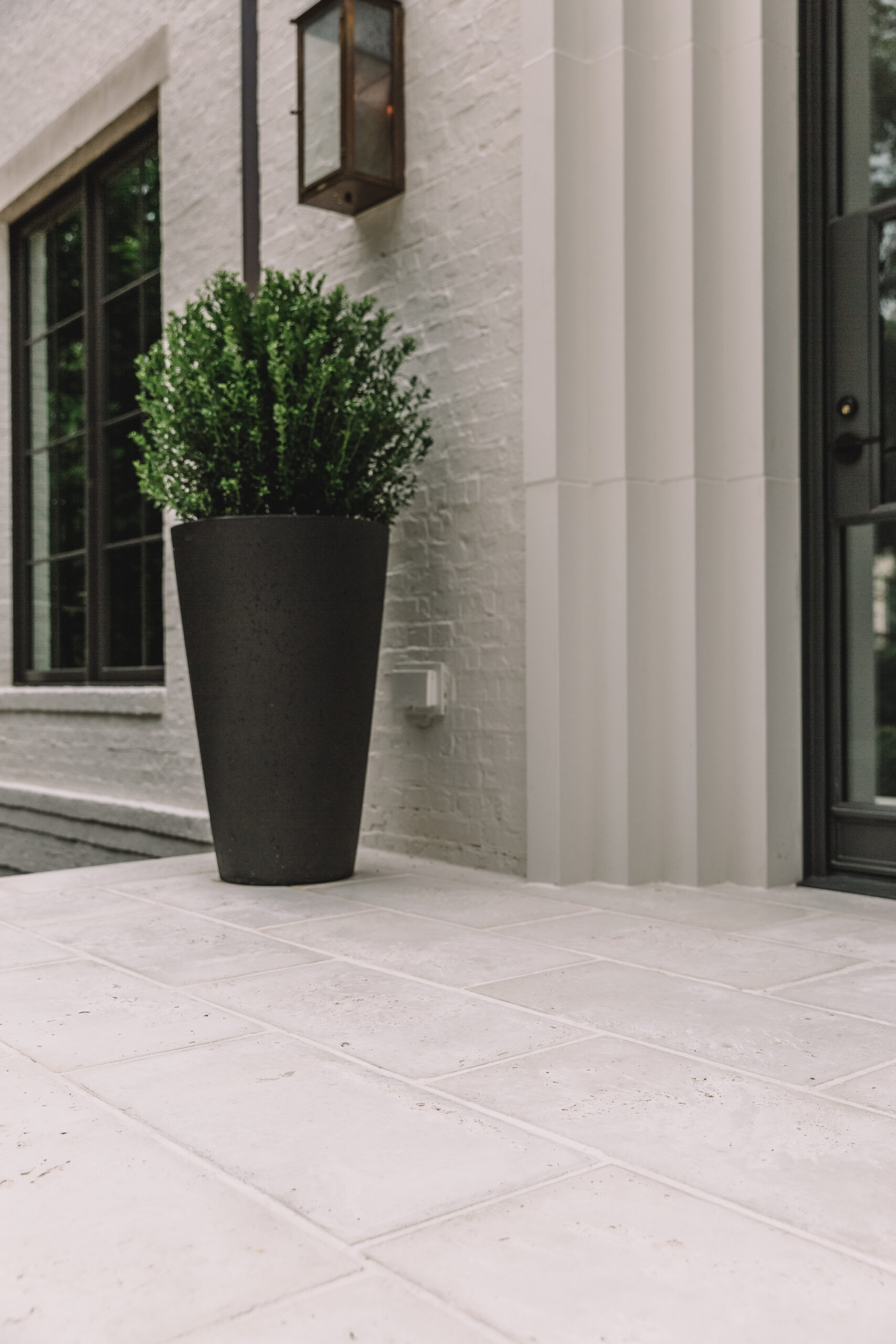

Pavers are durable and come in a variety of options, which make them an easy choice for many hardscaping projects. However, not all pavers are created equal, and things like aesthetic and price can weigh heavily on the decision.
Of all the paver options available to homeowners, wet-cast concrete pavers offer homeowners a product that is both beautiful and durable, while also being an affordable option.
Recently Corey McDonald, one of FireRock's Distribution Sales Reps, sat down with Tyler Kern from MarketScale to discuss how versatile a wet-cast concrete paver product can be. Check out the podcast (or read the transcript below) to see all the advantages a wet-cast product can bring to your hardscape or interior project.
This is the MarketScale AEC show, hosted by Daniel Litwin, the voice of B2B, your weekly B2B kickback for the best thought leadership in the industry. Bringing you education, information, and inspiration.
TK: Joining me now on the podcast is Corey McDonald. He’s the Market Manager at FireRock Building Materials. Corey, thank you so much for joining me on here on the podcast today.
CM: Yeah, thanks for having me, Tyler.
 TK: Absolutely. Today we are talking about pavers, and Check out the podcast, but also kitchens and living rooms, just to name a few different places. And I think most people tend to think that pavers are only for outside, but that’s not really the case, is it, Corey?
TK: Absolutely. Today we are talking about pavers, and Check out the podcast, but also kitchens and living rooms, just to name a few different places. And I think most people tend to think that pavers are only for outside, but that’s not really the case, is it, Corey?
CM: You’re exactly right. I mean, the most common applications are exterior use, but we’ve seen some trends in the market here lately, especially with our product, that are trending more to an interior use. Especially when you start talking about wet cast concrete pavers as opposed to a dry cast product.
TK: What’s the difference between those two?
CM: So a wet cast paver is exactly what it says. It’s a wet cast product – it’s poured in a mold wet and then it cures.
A dry cast product, which is much more common in the concrete paver industry, is a mix of dry aggregates that are packed into a mold and then cure. So there’s not actually any wet cement in them that hardens.
So it’s just a completely different appearance, a completely different aesthetic. They’re going to wear differently, show dirt differently, all of the above.
TK: Alright, interesting. So tell me a little bit more about what makes FireRock pavers unique.
CM: Well, part of what we just talked about, the fact that we do manufacture a wet cast product – there’s only a couple of those really out there. And then also, a couple of other things.
One big uniqueness is that we manufacture a 7-piece random pattern – so it’s kind of a French Ashlar design, if you will – and you can order that by the square foot.
So say you had a project that was 650 square feet. You can order 650 square feet of 7 piece random pattern and get all of the pieces necessary without having to calculate, “Hey, I need this many pieces of X, this many pieces of Y, and this many pieces of Z.”
And then, along with that, all of the sizes are nominal to a half inch grout line. So say, you have a 12 by 24 inch paver. That product’s actually going to be 11 ½ by 23 ½. And that is because the pattern is designed to lay out on a half inch grout, which is pretty unique for the paver industry, and just gives it a higher end finished look, if you will.
TK: I think a lot of people also, when they look at a product like this, they’re looking at installing something that they want to last a long time, and hopefully not have to replace quickly. So durability and strength is also something that you guys really hang your hat on.
CM: Yeah, absolutely. I mean, we advertise, that we have 3 times the compression strength of our nearest competitor.
And yeah, you’re exactly right, when you purchase something like this, you do want it to last a long time. So that’s one of the uniquenesses of a wet cast product is that durability over time, and the ability to blend into the natural environment and not wear.
 TK: Yeah, absolutely. And I live here in Texas, Corey, and so, if I were to install FireRock pavers around a pool or out on a patio or a deck or something like that, is there anything in there that allows it to stay cooler so that my feet don’t get cooked like, you know bacon or something like that, out on those hot summer days here in Texas?
TK: Yeah, absolutely. And I live here in Texas, Corey, and so, if I were to install FireRock pavers around a pool or out on a patio or a deck or something like that, is there anything in there that allows it to stay cooler so that my feet don’t get cooked like, you know bacon or something like that, out on those hot summer days here in Texas?
CM: Yeah, absolutely, man. Again, because it’s a concrete product, so its naturally air entrained. So that is one thing that’s going to help keep it cool.
And then our aggregates and just the design of the pavers, the colors, if you will, are going to lend itself to being a little more heat resistant than, say, a lot of your natural stones or a bluestone, or something like that.
They’re actually very comfortable and designed to be comfortable to walk on barefoot even in a really hot environment, such as a pool deck.
TK: What options exist when it comes to the appearance of pavers? You mentioned the patterns earlier, but are there various colors? What options exist if I’m looking at the appearance of the overall paver?
CM: Yeah, there are different colors. We offer four colors – Oyster, Steel, Ore, and Clay.
And then, the actual original appearance for our paver is one that is pitted. It kind of has a sunburst pattern of pitting, if you will, over the surface of the paver to add texture and just general aesthetic.
And then we also make a product that is “non-pitted.” Now that will still have some air bubbles, or something like that in it, because again it is concrete product, but it is actually smooth over the entire surface of the paver.
So a couple of different options there.
TK: Yeah, yeah, absolutely. So what are some of the best practices when it comes to installation? And I know there are going to be different – you’re going to be installing over different foundations and that sort of thing. So let’s start off just by talking about what are best practices for installing pavers over a subfloor?
CM: Okay, so, the biggest thing you want to – there’s a couple of things when a subfloor comes into play.
One is you’re typically going to be using a 1 inch thick material. So you want to make sure that your subfloor is recessed enough to give you enough space to allow for your paver – the one inch of the paver – and also a mortar bed and some type of crack suppressant mat.
Again, this a concrete product that is pretty heavy. We expect houses to settle. And so we want to be able to provide an installation that is going to again, like we talked about earlier, withstand the test of time.
Kind of the best practices that we’ve seen to be able to do that are to create a mortar bed, install a crack suppressant mat of some type, and then come back with mortar and your paver over the top of that. And then when you set your paver in your mortar bed, you always want to do what we call “back butter” the back side of the paver. Or in other words, take your mortar and smear it over the entire back of the paver before setting it in the mortar bed.
TK: Now let’s move over to a slab foundation. What are some of the best practices for a slab foundation and how does it differ than installing it over a subfloor?
CM: So not a whole lot different. You’ve got to make sure that your slab is set at the proper height, so that once you add your paver material to it, you get the right, desired finished floor height.
You can primarily use a one inch thick paver in this application, although we do see people use an inch and three-quarter, it just depends.
But again, you want to set your mortar bed, get everything nice and flush and level or to the desired pitch for drainage, however you’re installing it.
And then the biggest thing again here is just back buttering that paver before you set it in your mortar bed so that no pavers pop loose or anything like that down the road. You don’t have to, you know, worry about any crack suppressant, or anything like that in that circumstance.
Another thing is – again, it’s most common to set one inch pavers in this application. But say it was an open ended patio or porch and you wanted a bullnose border going around it, what we see a lot of people do is go ahead and set their border in an inch and three-quarter material because they like the thicker profile on the bullnose end, and then back fill with their random pattern with one inch material. And they can do that by just adjusting their mortar bed so that everything flushes out.
TK: Okay, that makes sense. Yeah, for sure. What about over a sand set? What does that mean and what does that look like? And how does that change the practice for installation, installing pavers?
 CM: So a sand set application means you don’t have any mortar bed, you don’t have any slab or anything like that, basically. You must use an inch and three-quarter thick material.
CM: So a sand set application means you don’t have any mortar bed, you don’t have any slab or anything like that, basically. You must use an inch and three-quarter thick material.
And then what you’re going to do is dig down, people vary, but six to eight inches below your finished grade. And then you come back with crush and run and/or 89-10, which is a very small aggregate, that you pack in tightly, that you compact down tightly. And then set your paver material over the top of that.
And then on your grout joint, instead of using like a standard grout or a mortar, you’re going to want to use a polymeric sanded grout, because it has some flex in it to keep your grout lines from popping.
This is very, very common for pool decks, especially with big pool contractors that also supply maintenance on their pools. They really like to use our paver in this application because they know that if something ever happens and they ever have to get back to the plumbing at that pool, they’re not going to have to tear a slab out to be able to get to that plumbing. They can just simply come in, remove a paver, or remove a section of the pavers, and then access what they need to access and replace it without, you know, causing a homeowner a lot of pain.
TK: Yeah, that’s absolutely true because going into a slab foundation or something like that would just be a nightmare, that’s for sure.
Okay, so what’s the best way to maintain pavers over time to make sure that they last a long time? Because your products are obviously high quality, we talked about that earlier, but how can people maintain pavers over time to make sure they stay looking their best, and that sort of thing?
CM: Yeah, absolutely, great question. Again, it is a concrete product, so it is porous, right? So we always recommend that after installation, the paver is sealed.
Primarily, we see people sealing it with a water-based penetrating sealer, that way it doesn’t take away from that kind of chalky, natural appearance of the paver. But you can also seal it with a solvent based or topical sealer as well if you desire to.
But really, just making sure that you do seal them properly, and that you keep up with that over time. Depending on the application, depending on how many trees are around, or just whatever, you may be able to seal them one time and walk away come back and seal them again – clean and seal them again 15 years later. However, most common practice is to reclean and seal those pavers every 4 to 6 years.
TK: Okay, so every 4 to 6 years is probably best practice.
Okay, so what’s the best way for people to find and purchase FireRock pavers if they are interested in it? You know, is it primarily contractors that are looking for your product and that sort of thing? What’s the best way for people to find and purchase them?
CM: Yeah, so go to our website, that’s probably going to be the number one place. You can always contact us here at our corporate office and we will put you in touch with the right people, whether that’s distribution or someone with FireRock in your local market.
But we have all of distributors listed on the website; there’s actually a map there where you can find the ones closest to you, and they can assist you with whatever quoting you need and whatever information you have or that you’ll need to get your project going.
TK: That’s really awesome. I love the way that these look, and just the overall appearance, I think it’s really clean, really classy looking, and good stuff.
Corey, thank you so much for joining me here on the podcast today and explaining a little bit more about the concrete pavers that you have there at FireRock
CM: Yeah, absolutely, Tyler. Thanks for having me.